The Real-Talk Guide to Washing Your Sheets (and Making Them Last Forever)
Let’s be honest, washing your bed linens seems like a pretty straightforward chore, right? Toss ’em in, add soap, press start. But if you’ve ever splurged on a really nice set of sheets only to have them feel scratchy or look faded after a few washes, you know there’s more to it.
In this article
I learned this the hard way. Early in my career, working with textiles for high-end hotels where everything had to be perfect, I completely ruined a set of incredibly expensive Egyptian cotton sheets. I blasted them with too much heat, and those beautiful, long fibers just turned brittle. It was an expensive, embarrassing lesson, but it taught me to respect the fabric. Washing sheets isn’t just about getting them clean; it’s about preserving the fibers so they stay soft, comfortable, and beautiful for years.
So, let’s go beyond the basic instructions on the detergent bottle. This is everything I’ve learned from handling thousands of linens, from simple cotton to fancy silk, adapted for your home. It’s about turning a chore into a skill.
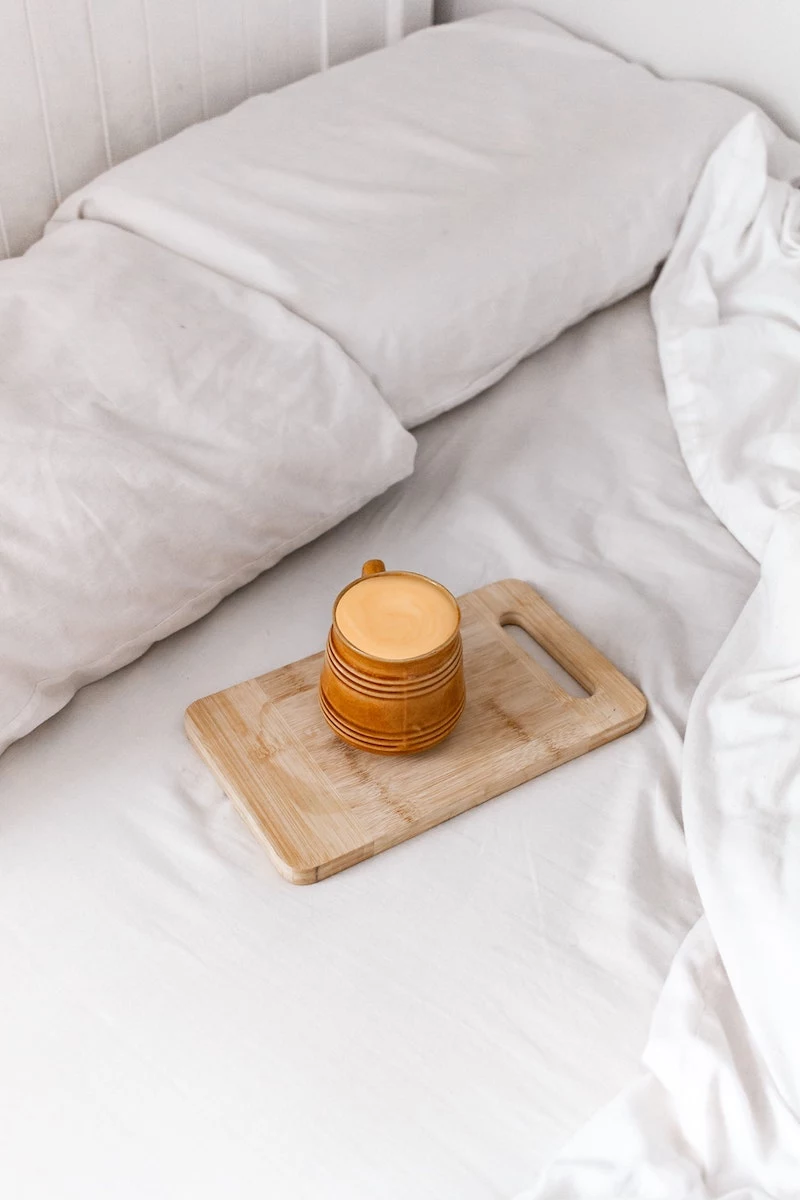
First Things First: Know Your Fabric
Before you even think about washing, you have to know what you’re working with. Treating all sheets the same is the #1 mistake that leads to shrinking, pilling, and that sad loss of new-sheet softness. Here’s a quick rundown.
Cotton: The Classic Go-To
Most of us have cotton sheets, and for good reason—it’s breathable and durable. But the magic is in the details. It all comes down to the length of the individual fibers, called staples.
- Long-Staple Cottons (like Pima or Egyptian): These have longer fibers, which create a finer, stronger, and much softer yarn. They’re less likely to pill because there are fewer tiny fiber ends to get roughed up. This is premium stuff, so it needs gentler care. Be prepared to invest here—a quality set can range from $150 to $500+, but with the right care, they can last for ages.
- Standard Cotton: This is more common and budget-friendly. The shorter fibers create a slightly crisper feel. They’re workhorses but can be more prone to pilling over time.
Oh yeah, and the weave matters, too. Percale is that crisp, cool, grid-like weave that feels amazing on a warm night. Sateen has a different weave that makes it feel silky and smooth, but it can be a bit more delicate and prone to snagging.

Linen: The Casual, Breathable Wonder
Linen, made from the flax plant, is a powerhouse. It’s super strong and absorbent, which is why it feels so incredibly cool and airy. When it’s brand new, it can feel a little stiff, but here’s the cool part: linen gets softer and better with every single wash. The downside? Those strong fibers can be brittle and crease easily. They need a lot of water to move around in the wash and absolutely hate high heat, which can scorch them for good.
Cellulosic Fabrics (like TENCEL™ or Modal)
These are kind of a hybrid, made from processed wood pulp (usually from eucalyptus or beech trees). The result is a fabric that’s ridiculously soft, drapes beautifully, and is amazing at wicking away moisture. They feel incredibly gentle on the skin. The key here is gentle care: cool water and low heat are non-negotiable to keep them from losing their silky feel.
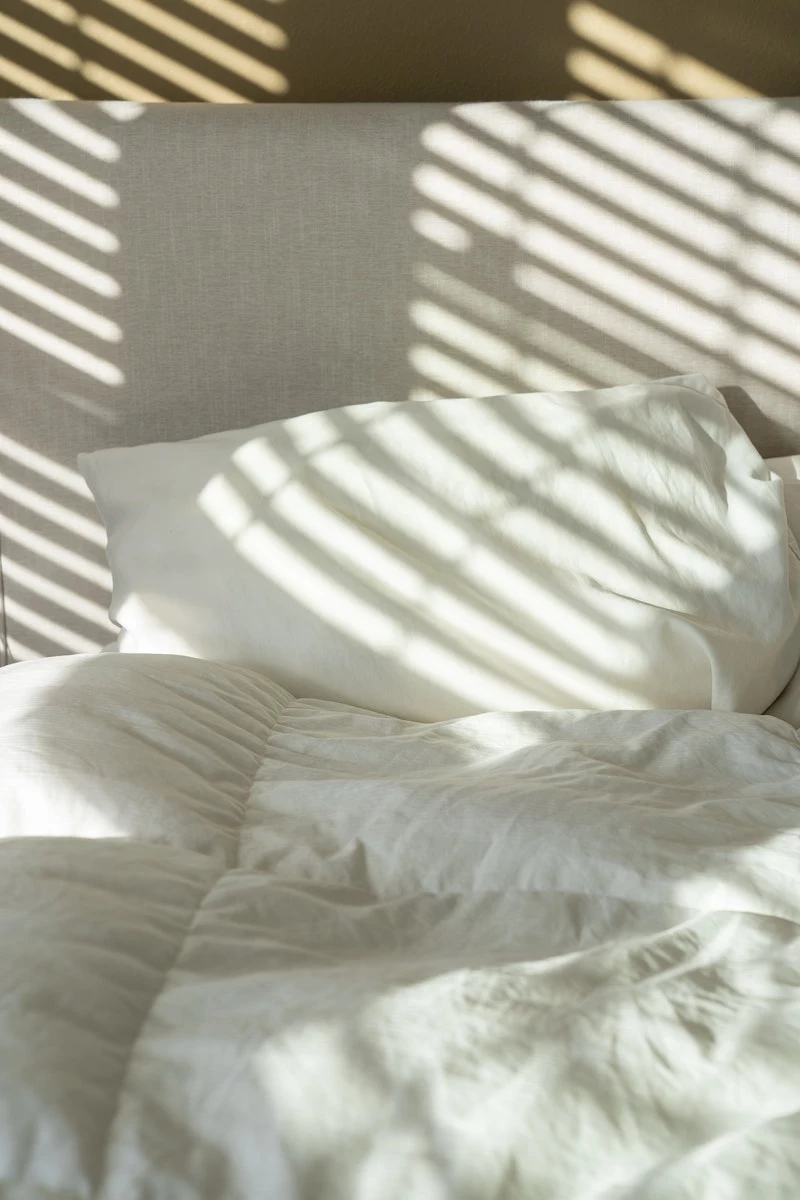
Silk: The Ultimate Luxury
Silk is a protein fiber, not a plant fiber, and that changes everything. It’s super strong for its weight but is extremely sensitive to heat and harsh detergents. Standard laundry detergents, which are typically alkaline, will literally dissolve the protein and destroy the fabric. It’s a true luxury item that demands a special, pH-neutral detergent and a very gentle touch.
Synthetics (Microfiber & Polyester)
These are plastic-based fabrics, which makes them cheap, durable, and wrinkle-resistant. But here’s the catch: they don’t breathe. Since they’re basically plastic, they can attract and trap body oils, which can lead to funky smells if not washed thoroughly. They’re also notorious for static cling.
The Pro Washing Method, Step-by-Step
A consistent process makes all the difference. This is the method we used at the hotel, just simplified for your home machine.
Step 1: Sort Like a Pro
You probably sort by color, which is great, but you also need to sort by weight. Never, ever wash your nice bed sheets with heavy towels or denim jeans. The rough texture of heavier fabrics acts like sandpaper on your sheets, causing pilling and wear. This is probably the biggest cause of sheets losing their smoothness.
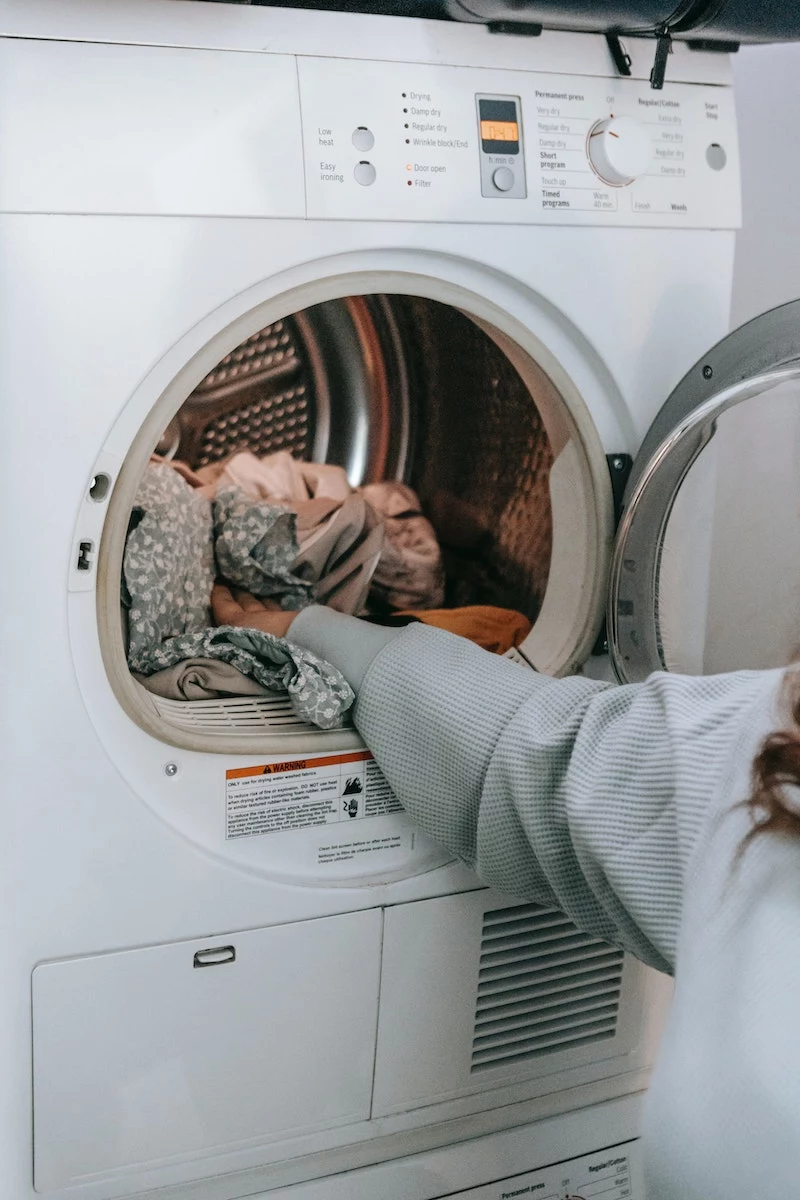
Quick tip: Turn pillowcases and duvet covers inside out, and zip any zippers closed. This protects the outer finish and stops small things (like socks!) from getting trapped inside.
Step 2: Tackle Stains Before the Wash
Once a stain gets hit with hot water or the heat of a dryer, it can set forever. Always pre-treat!
- Body Oils & Sweat (Yellowing): These are oil-based. A single drop of a classic blue dish soap (yep, I mean Dawn) worked gently into the stain before washing works wonders to break it down.
- Blood: This is a protein stain, so heat will cook it in. Always use cold water. On light-colored cottons, a little hydrogen peroxide is your best friend. It will bubble up as it lifts the stain. Just rinse with cold water before it goes in the main wash.
- Makeup: For oil-based foundations, treat them like body oil. For other types, a bit of micellar water on a cotton pad is a surprisingly effective and gentle trick.
Step 3: Load the Machine (But Don’t Stuff It)
This is critical. Your sheets need room to swish around freely in the water. If the drum is packed tight, detergent won’t distribute evenly and dirt won’t rinse out properly. A good rule of thumb is to fill the drum no more than three-quarters full, without packing it down. This helps reduce wrinkles, too!

Step 4: Pick Your Temperature & Detergent Wisely
This is where the magic really happens.
For temperature, here’s my cheat sheet:
– Cold: Best for delicates like silk and Tencel, or for bright and dark colors you don’t want to fade.
– Warm (around 104°F/40°C): This is the sweet spot for most cotton and linen sheets. It’s warm enough to dissolve detergent and get rid of body oils effectively, but not so hot that it causes major shrinking or wear.
– Hot: Use this setting for sanitizing only—like when someone’s been sick or you’re dealing with serious dust mite allergies. Regular hot water washes will degrade your sheets much faster.
Now, for detergent. So many people use way too much, thinking it gets things cleaner. It doesn’t. It just leaves a residue that makes sheets stiff, dull, and can even irritate your skin. Start with about half the recommended amount. If your sheets come out clean, that’s all you need.
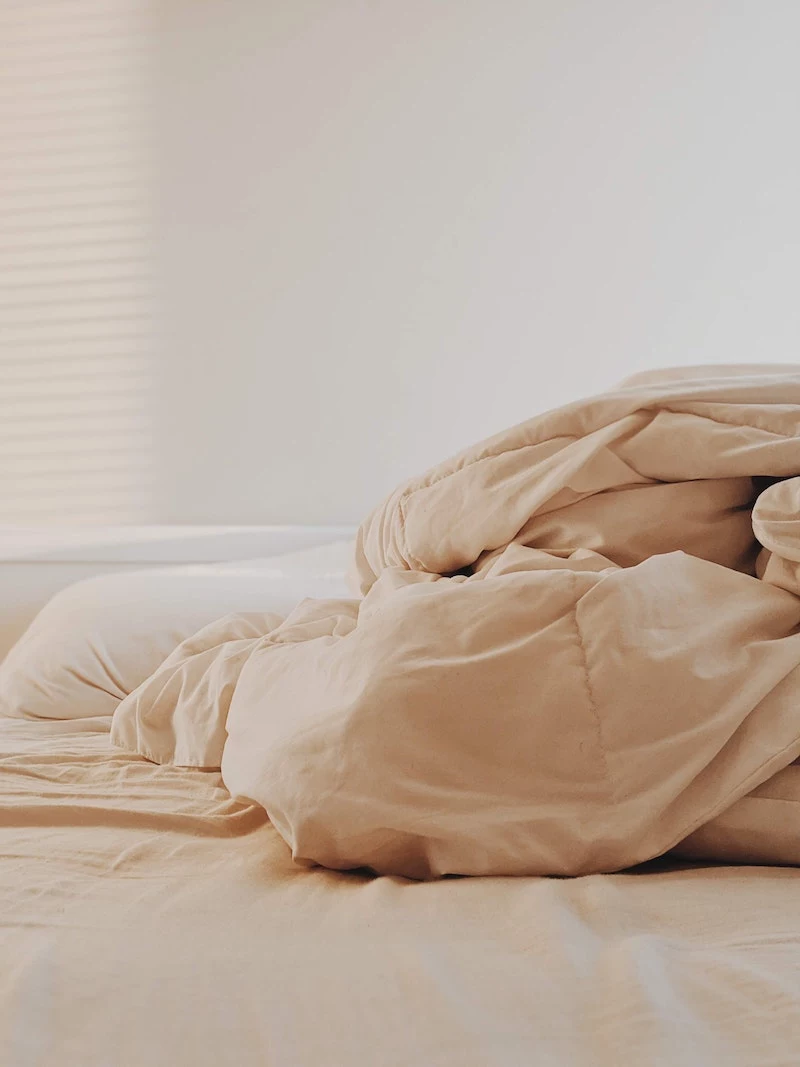
Look for detergents with enzymes (protease, amylase, lipase) that break down stains, and try to find one without “optical brighteners.” Those are chemicals that just coat the fabric to make it look brighter, but they can cause yellowing over time. Good options you can find easily are Tide Free & Gentle, Seventh Generation Free & Clear, or even specialty brands if you feel like it.
And please, skip the liquid fabric softener and dryer sheets. They coat fibers with a waxy film that kills breathability and absorbency. A fantastic alternative is a half-cup of plain white vinegar in the rinse cycle. It naturally softens by stripping away detergent residue, and I promise, your laundry won’t smell like a salad.
Drying: Where Most Sheets Go to Die
I’m not kidding. More linens are ruined in the dryer than anywhere else. The enemy is over-drying on high heat, which literally cooks the fibers until they’re brittle.

- Shake It Out: Before you toss sheets in the dryer, give each piece a good, hard snap. This untangles them and helps them dry faster and more evenly.
- Low Heat is Your Friend: Always, always use a low or medium heat setting. It might take a few extra minutes, but your sheets will last so much longer.
- Get Some Wool Dryer Balls: Ditch the dryer sheets for these. Toss three or four in with your sheets. They bounce around, separate the fabric, cut down on drying time, and soften everything up naturally. You can grab a set for about $10-$15 online or at Target.
- The 95% Dry Rule: This is my most important tip! Pull your sheets out of the dryer when they are still very slightly damp. Not wet, just not bone-dry and crispy. Immediately fold them or put them right on the bed. As they cool, the last bit of moisture will release, leaving them incredibly smooth and almost wrinkle-free. This single trick will change your laundry game.
Heads Up! A Crucial Safety Warning
Dryer fires are terrifyingly common. You have to clean your lint filter after every single load—no exceptions. And at least once a year, you need to clean out the entire vent duct that runs from your dryer to the outside. Lint builds up in there and is highly flammable. You can do it yourself with a kit from a hardware store for about $20 or hire a pro. This is a non-negotiable safety step.
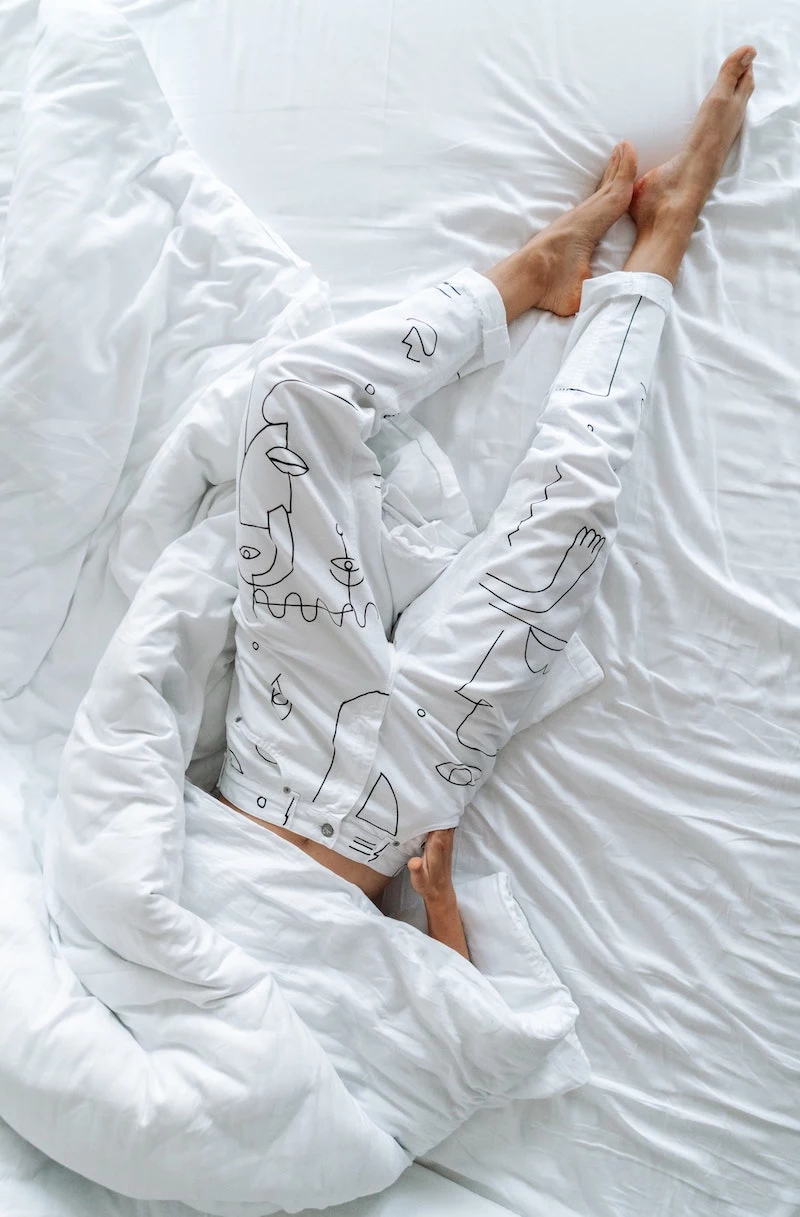
Troubleshooting and Pro-Level Tips
Dealing with Hard Water
Not sure if you have hard water? Check your faucets and showerhead for white, crusty buildup. That’s a dead giveaway. Hard water minerals make detergent less effective and leave deposits on fabric, making it feel stiff. An easy fix is to add a half-cup of a laundry booster like Borax or washing soda to your wash. It helps your detergent do its job.
Laundry Stripping for Dingy Whites
If your white sheets are looking yellow or dingy, it’s likely due to buildup. You can do a “laundry strip” in the bathtub. Dissolve a quarter-cup of Borax, a quarter-cup of washing soda, and a generous scoop of powdered detergent in hot water. Add your clean linens and let them soak for at least four hours. The water will likely turn a horrifying shade of grey. It’s gross, but so satisfying. After, just run them through a normal rinse-and-spin cycle in the machine. A word of caution: this is safest for whites. If you want to try it on colored linens, test a single pillowcase first to make sure it’s colorfast!

Quick Win for a Fresh Bed
Don’t have time for a full wash? Just change your pillowcases. It takes 60 seconds, and since they collect the most oils and products from your face and hair, it can make a huge difference for your skin and overall feeling of cleanliness.
The Perfect Linen Closet
When you’re storing your spare sets, they need to breathe. Avoid plastic bins, which can trap moisture and cause mildew. A cool, dry linen closet with slatted shelves is ideal. If you need bags, use breathable cotton ones.
Here’s a little trick to keep your sets together and your closet tidy: Fold the fitted sheet, flat sheet, and one pillowcase, then tuck the whole bundle inside the second pillowcase. No more hunting for a matching set!
Honestly, taking a little extra care with your linens isn’t about being fussy. It’s a small act of self-care that pays off every single night when you slip into a bed that feels comfortable, clean, and truly luxurious. Give these tips a try—your sheets will thank you for it.
Inspirational Gallery
- Yellowing on white sheets? Often caused by body oils. A pre-soak with an oxygen-based brightener like OxiClean White Revive before the main wash can work wonders.
- Makeup or blood? Dab with cold water immediately. For stubborn spots, a specialized enzyme cleaner can break down the proteins.
The average used mattress can have anywhere from 100,000 to 10 million dust mites inside.
While your sheets provide a barrier, these microscopic critters feed on dead skin cells. Washing your linens in hot water (around 130°F or 60°C) is one of the most effective ways to kill them off and remove allergens, ensuring your bed is a true sanctuary for rest, not a buffet for bugs.
The #1 enemy of soft sheets is too much detergent. It seems counterintuitive, but excess soap doesn’t get fully rinsed out. Instead, it builds up on the fibers, leaving them stiff, scratchy, and sometimes even a bit greasy. Always measure, and consider using half the recommended amount, especially with high-efficiency machines.
Machine Drying: Quick and convenient, it uses heat to fluff fibers, making them feel soft. The downside? High heat is the fastest way to damage delicate long-staple cottons and can set wrinkles if left in the drum.
Line Drying: The ultimate gentle cycle. It’s energy-free, naturally brightens whites with sunlight, and imparts a unique, fresh scent. Sheets may feel a bit crisper, a texture many people love.
For the best of both worlds, line dry until 90% dry, then tumble on a low-heat setting for 10 minutes to soften.
Should you ever use liquid fabric softener on high-quality sheets?
Most textile experts say no. Conventional softeners work by coating fibers with a waxy, water-repellent film. This reduces the natural absorbency and breathability of fabrics like cotton and linen, trapping oils and making them feel less fresh over time. For that soft feel without the buildup, add a half-cup of white vinegar to the rinse cycle. It acts as a natural clarifier, stripping away detergent residue and leaving fibers naturally soft.
Elevate your bedtime routine with a simple, custom linen spray. It’s a touch of luxury that helps freshen sheets between washes.
- Mix 2 ounces of witch hazel or vodka (as an emulsifier) with 4 ounces of distilled water in a spray bottle.
- Add 15-20 drops of your favorite essential oils. Lavender promotes calm, while a blend of eucalyptus and mint feels invigoratingly clean.
- Shake well before each use and lightly mist over your pillows and top sheet a few minutes before getting into bed.
According to the EPA, the average American family washes about 300 loads of laundry per year, and nearly 90% of the energy consumed by a washing machine goes to heating the water.
- Your sheets will be noticeably smoother and less wrinkled.
- They’ll be easier to store neatly in your linen closet.
- You can skip the tedious task of ironing.
The secret? Fold them while they are still warm, straight out of the dryer. The residual heat helps smooth out creases, acting like a gentle press.
To truly make your favorite sheets last, give them a break. Having at least three sets per bed is the professional standard: one on the bed, one in the wash, and one resting in the closet. This rotation prevents excessive wear on a single set and ensures the elastic and fibers have time to recover between uses, significantly extending their lifespan.
The laundry aisle is changing. Forget heavy plastic jugs—brands like Earth Breeze or Tru Earth are popularizing detergent sheets. These are concentrated, pre-measured, dissolvable strips of detergent that are lightweight and packaged in zero-waste cardboard. They work well in all water temperatures and are especially great for delicate fabrics as they dissolve completely, leaving no residue behind.










